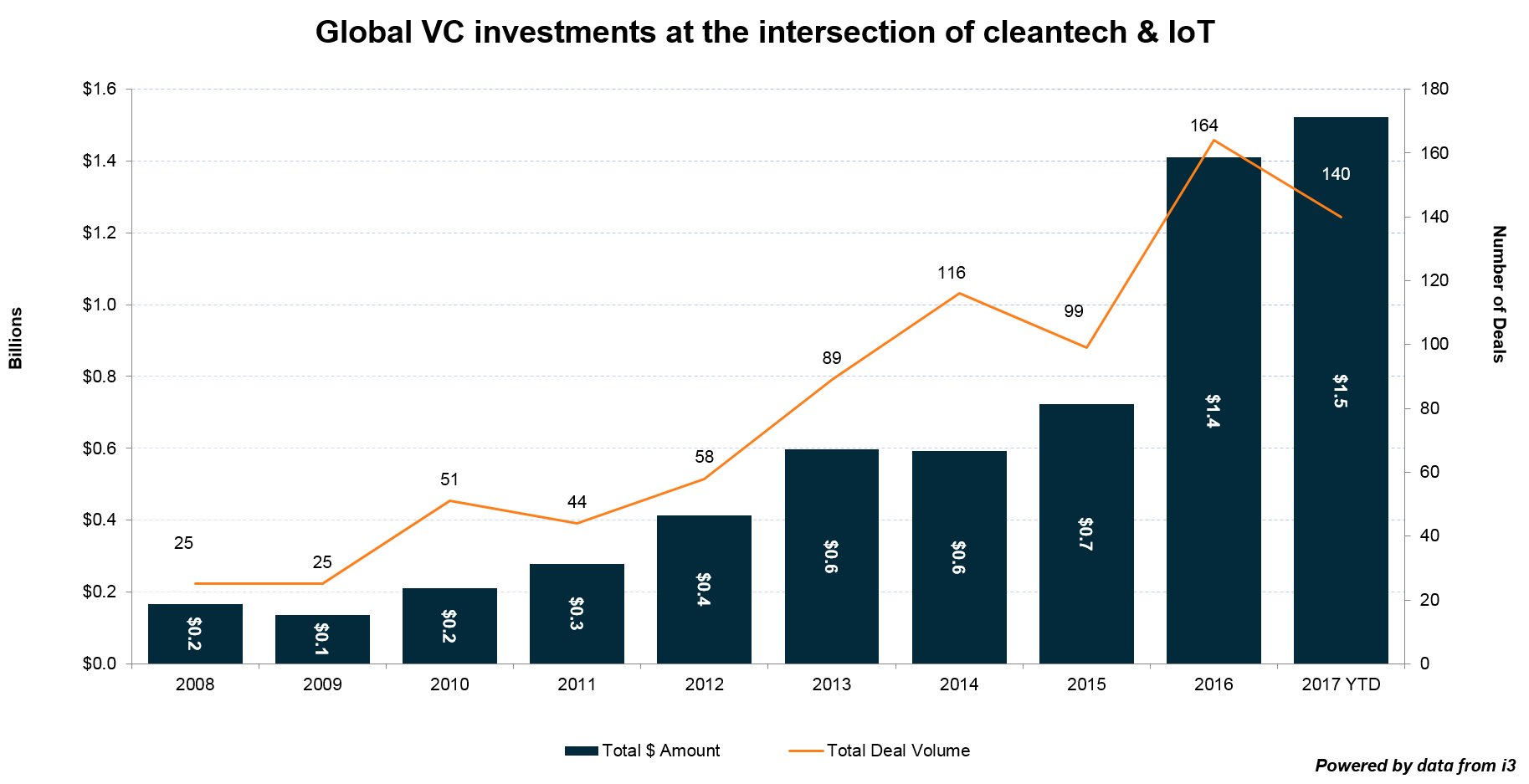The Internet of Things (IoT) has enabled the connection of millions of devices, resulting in a vast amount of data being extracted from these devices, which then enables innovation in applications areas like industrial automation, predictive maintenance, and artificial intelligence. The IoT theme is certainly an area that we have been paying close attention to, where we have seen an exponential increase in venture investments at the intersection of cleantech and IoT from traditional venture capital investors and large multinational corporations, totaling more than $15 billion so far in 2017.

With the rise of venture capital dollars going to IoT, there has been an influx of companies and solutions on the market, creating a very fragmented landscape within the IoT ecosystem. As a result, this fragmentation has become one of the challenges in adopting IoT technologies and applications on a commercial scale.
Wifi, Bluetooth, LoRa, Zigbee, 5G – these are just some of the well-known wireless networking technologies that are currently available for IoT-based solutions. Each of these wireless protocols has different characteristics that were designed for specific applications. For example, LoRa (which is the underlying protocol adopted by Actility) is optimized for low-power operations across a wide network area, suiting industrial and smart city applications very well. The fragmentation issue here is less so on the selection of the appropriate wireless protocol, but more on the uncertainty of interoperability across the various communication networks. In addition, when customers need to adopt multiple types of communication networks, the associated costs can become unrealistic when trying to achieve their targeted ROI.
Achieving IoT-enabled applications such as industrial automation and predictive maintenance requires a suite of processes to extract the data from connected devices, analyze the various types of data input, identify data patterns and insights, and then finally develop industry-specific applications. Terms like Software-as-a-Service (SaaS), Platform-as-a-service (PaaS), and Artificial Intelligence (AI) are currently being used to describe the different types of solution offerings in the IoT ecosystem, which can be confusing to those new to the IoT space. The complexity is compounded by the lack of industry standards in place that would help integrate the various processes into a cohesive solution – a “one stop shop,” so to speak. To illustrate this complexity, there are companies like Sixgill and MapD that are solely focused on data processing and analytics, while companies such as SparkCognition and Flutura go one step further with their intelligence solutions to provide use cases, such as predicting equipment failures and automating certain operations.
Although the various types of IoT solutions for industries currently do exist, the main challenge then becomes the integration and interoperability of these processes to achieve the desired end result. For instance, a data analytics solution will need to have the capability to ingest data streams from different sources. Furthermore, factoring in differences in equipment OEMs and operating systems, the process becomes much more complex in order to make them “talk to each other.” Finally, there is the cybersecurity issue for not only wireless networking, but also for the control and operation of the connected assets.
From a potential customer’s perspective, it becomes both a costly and time-consuming experience to procure multiple solutions from different vendors, as well as integrating them all together. We have started to see industry standards being developed (i.e. in wireless protocols), and expect more to evolve through open-source frameworks that encourage collaborations among solution developers.


